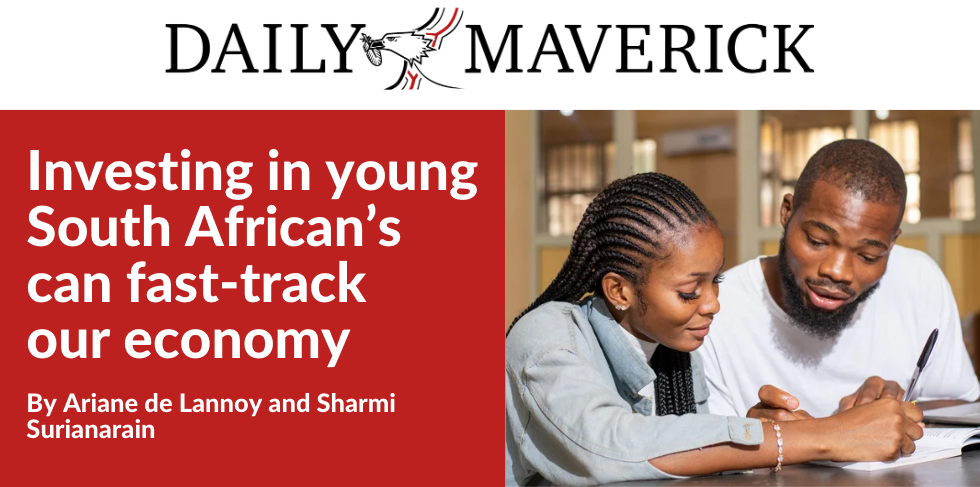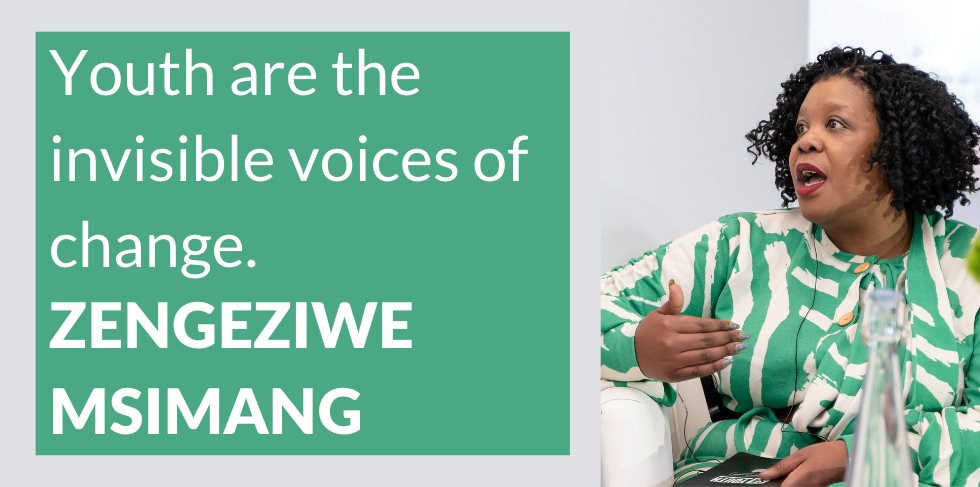Whatever you make of the latest data, it’s clear that things are still very tough for our economy. The unemployment numbers show it: nearly two-thirds (63.2%) of young people are not in any form of education, training or work. The answer seems to be big economic plans, massive investments, ambitious policy reform promises and soaring statements about ‘building back better.’
We are encouraged that the most recent big plans of government and business say we need to rebuild the economy for inclusive growth. But, the real question is how?
Our two organisations have been working on inclusive job growth since long before the pandemic. We’ve learned a lot about what works and what doesn’t, and more importantly, what sounds good on paper versus what is practical, sustainable, adaptable and scalable—the gap into which many big plans fall. But we have also learned that this gap can be bridged, to deliver powerful, real-time outcomes that have impact. The key is sector-level facilitation, mobilisation and coordination.
It might be assumed that inclusive growth happens when government creates the right enabling environment for the private sector – that incentivising individual companies to do the right thing will be enough. In our experience, this rarely ever happens. Even the most well-resourced, well-intentioned and far-sighted companies can make limited headway alone against the many systemic barriers that make inclusive growth and inclusive hiring so difficult – poor education systems, increasing transportation costs, and still too-high data costs for accessing the internet and working virtually. The same companies spend valuable time and resources on developing innovative interventions, which their competitors replicate and compete with them against – thus undermining their intent, wasting resources and missing a valuable opportunity to learn from each other and collaborate for expanded impact.
Without something else added to the mix, fewer jobs get created, and far fewer of those jobs go to those who need them most. What is this additional ingredient – alongside the traditional inputs of capital and labour – that can help spur growth? We think it is sector-level coordination.
This process supports industries to organise themselves into engines of growth, by working constructively with government and key stakeholders harnessing the mutual interests of all players—even competing companies—to increase total investment, translate it into concrete jobs and fill them with skilled workers. The results can be transformative, as we have seen. Coordination between business and government using sector-level intermediation, and a foundation of trust, can deliver concrete outcomes that have proven resilient even in the face of the pandemic.
One example is the global business services sector which ranges from front-office call centres and customer service to back-office legal, technical and accounting services—an industry that offers good jobs for young people (87% of new recruits in 2019 were aged 18-35). Such ‘export services’ are fuelling economic growth globally, and South Africa has natural competitive advantages, such as our time zone proximity to Europe and spoken English skills. Historically, our ability to fully capture the latent growth potential had been hampered by lack of coordination between players and even internal competition. We have seen a doubling of jobs in this sector over the last five years, which we believe is the result of improved coordination between the industry body (Business Process enabling South Africa) and government’s Department of Trade, Industry, and Competition (Dtic). Our organisations have supported this partnership by raising the profile of the sector in national economic policymaking and building agreement among players that solving shared problems was essential. During the pandemic, together with our government partners, we secured essential sector status for those critical services provided by the sector, both locally and internationally, across a range of services such as emergency health, fire, electricity and financial services. The practical benefit of all this? The South Africa call centre industry regularly ranks in the top two emerging markets in the world and is on track to create half a million new jobs by 2030.
Another example is the agricultural sector. Despite the expropriation without compensation policy challenges, the sector grew by 13.1% in 2020. The Agricultural Development Agency (AGDA), formed in 2020 to provide access to finance, skills and technical expertise for black commercial farmers, has already identified a pipeline of catalytic projects that range from township focused agricultural skills development with innovative offtake mechanisms; to clustered support by Sernick Empowerment of 960 beef farmers in Free State, Gauteng and the Eastern Cape. These projects are innovative, scalable, replicable and generate shared wealth for participants. They provide opportunities for people to participate in work in a variety of ways, in dignity, without the traditional employer-employee hierarchical relationships that were typical of past means of production. Encouraged by the work of the ADGA, we are supporting the organisation to expand its services; identify new opportunities; and work hand in hand with various government departments and programmes.
These examples illustrate the benefits of sector facilitation and provide a toolkit for replicating them. The challenge now is to scale this approach in more sectors and into the informal economy. A range of priority sectors have been identified including digital, tourism, forestry, manufacturing, installation repair and maintenance and renewable energy—all sectors that, like global business services, agriculture, and automotive manufacturing feature latent growth potential, solvable problems and stakeholders with common interests. They also share a common purpose with their government stakeholders – to grow the sector, employ more people and create wealth for their stakeholders.
How do we avoid more plans that are too big to implement? Sector-based solutions are the key to unlock potential and turn it into inclusive jobs that put income into pockets now and over the long term. This is how we move beyond rhetoric to reality – and build a South African economy that is growing and a society that works for all.
Source: This article was originally published on 18 March 2021The article was written by Maryana Iskander, CEO of Harambee Youth Employment Accelerator, and Tanya Cohen, Public Private Growth Initiative (PPGI) Co-ordinator.





 Stay Connected
Stay Connected

